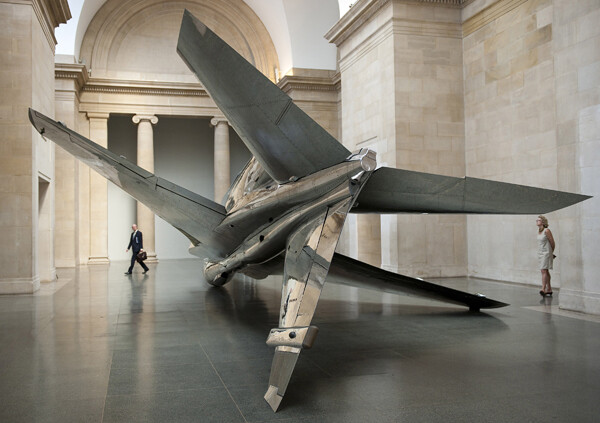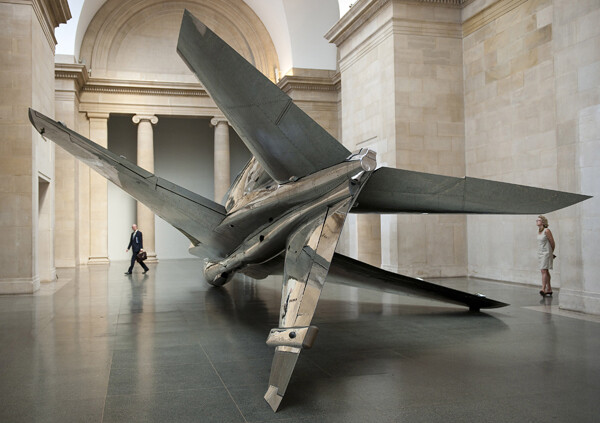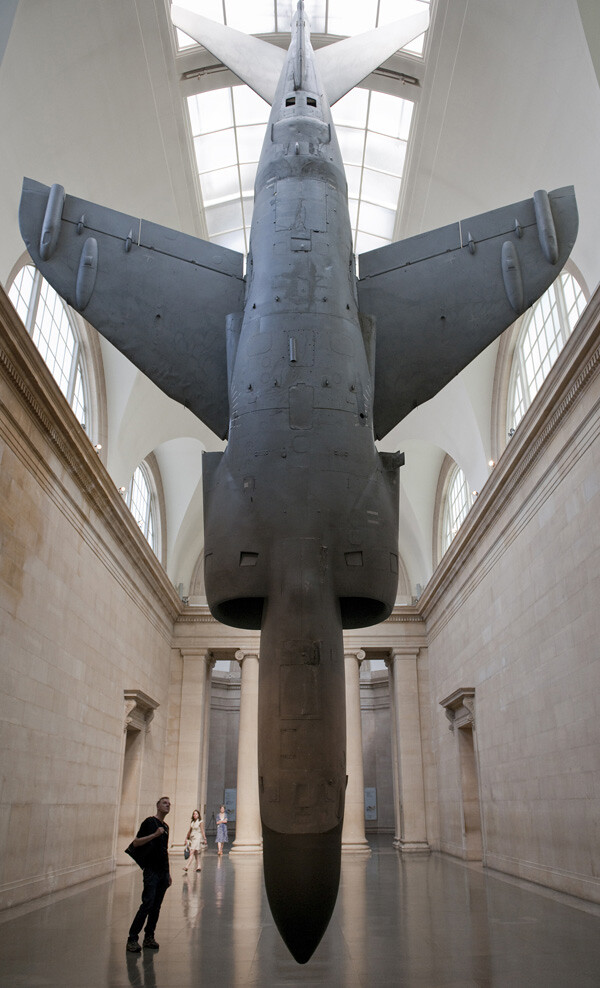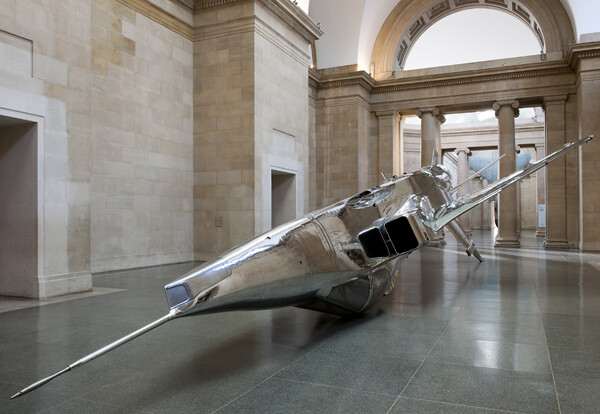Plucked from the sky, a Sea Harrier and a Sepecat Jaguar jet have fallen to earth in Tate Britain. It’s the work of Fiona Banner, and in an average summer critics would be busy drawing tidy parallels between the work and the UK’s ongoing military involvement in overseas conflicts. But these current affairs were overshadowed instead by a kerfuffle sparked when arts practitioners criticised the Tate’s sponsorship by BP in the Guardian newspaper on the day of the opening. As I approached the galleries a few days later, the high-pitched argument was ringing in my ears: critic Jonathan Jones had written that given impending cuts in cultural funding, ‘if they [museums] can get money from Satan himself, they should take it’; ‘art will sell its soul, surrender all moral integrity’ countered artist activist John Jordan the next.
As it turns out, Banner’s machines are so seductive it is well nigh impossible to feel any self-righteous anger, be it directed toward BP, activists or tub-thumping columnists. In one gallery, the entire Sea Harrier is suspended from its tail, nose hovering above the floor. By painting a dark beak onto the nose and light feather markings on its wings Banner has changed its livery minimally; it shape-shifts between avian and military identities. The plane (its gutted cockpit almost at eye level) is trussed like a bird, yet with wings apart it could also be suspended in ecstatic crucifixion. Separated from the first scene by a smaller colonnaded chamber the Jaguar lies on its back, a fish out of water gasping for air through the inlets that are now high on each side. But what a stunning fish, with its paint stripped and metal polished so the craft of its construction is revealed and visitors reflected in its surfaces. The neo-classical Duveen galleries, built between world wars, were designed not to overawe, but the enormity of planes that barely fit inside, difficult to take in in their entirety, underscores the building’s physical and conceptual frame. The grandeur of an empire comes once again to the fore—bagging colonies in the New World and slavery had sweetened the British tooth to sugar, enabling Henry Tate to make the fortune that funded the original Tate collection.
Banner’s installation is a tight, rich bundle of contradictions; beauty and brutality, nature and culture all nestle together. Curator Lizzie Carey-Thomas has called the jets ‘highly evolved predatory instrument[s]’; their titles from the natural world are a lesson in the fine distinctions between savagery and civilization. Naturalising such machines applies a lenient model that tolerates dog-eat-dog warfare, a convenient means of ceding responsibility for actions. But as the artist points out, these machines are in current usage, and thus implicate us all. Like the question of who funds culture, defence and warfare are not simple issues but a mass of interdependent factors. As much as an exploding oil rig reminded us of where the stuff that powers our cars and buses comes from, a fighter jet in a gallery cannot hide its identity as a weapon of destruction. Banner does this, yet also makes clear the heady appeal of violence. Being a civilized, enlightened society is not a matter of straightforward categorisation, with war or sponsorship by oil companies falling under immoral activities, culture in the column of good and necessary. Signifiers and symbols facilitate complexity; we shouldn’t fool ourselves that they are simple.
“Curators, crude oil and an outdated cultural mix,” The Guardian, published online 28 June 2010. www.guardian.co.uk/business/2010/jun/28/bp-tate-curator-oil
Jonathan Jones, “Tate is right to take BP’s money,” The Guardian, published online 29 June 2010. www.guardian.co.uk/culture/jonathanjonesblog/2010/jun/29/tate-bp-sponsorship
John Jordan, “Will BP lead Tate into artistic hell?,” The Guardian, published online 1 July 2010. www.guardian.co.uk/culture/2010/jul/01/tate-bp-corporate-sponsorship
Lizzie Carey-Thomas, “Air Craft,” Fiona Banner: Harrier and Jaguar, Tate Publishing, 2010




